Paul Hanlon0070260052, 9780070260054
You don’t have to scour piles of technical literature for compressor answers any longer. The Compressor Handbook compiled by Paul Hanlon packs all the answers on design procedures, practical application, and maintenance of compressors–straight from top experts on these widely used machines. You get details on everything from fundamentals and theory to advanced applications, techniques, and today’s materials — including sought-after data on compressors that inflate tires, spray paint, increase the density of natural gas, or perform any of a myriad of other important industrial and day-to-day functions. This fully illustrated Handbook can help you:
Understand the structure and operation of compressors of all types Design or select compressors for any use, from power-cleaning to chemical processes Follow step-by-step design procedures for fewer errors and optimized results Specify leading-edge materials, components, and lubricants Operate and maintain all types of compressors at peak efficiency Answer questions on and provide designs for ancillary and auxiliary equipment Invent new applications for compressor technology Easily find tabular data on gas properties, efficiency curves, compression ratios, and horsepower, plus definitions of nomenclature
Table of contents :
Front Matter……Page 1
Contributors……Page 3
Preface……Page 5
About the Editor……Page 6
Table of Contents……Page 0
Table of Contents……Page 7
1.1 Nomenclature……Page 16
1.2 Theory……Page 17
1.3 References……Page 30
2.1 Compressor Performance……Page 31
2.2 Reciprocating Compressors……Page 42
2.3 Screw Compressors……Page 53
2.4 All Compressors……Page 55
3. Compressor Performance – Dynamic……Page 56
3.1 General Description of a Centrifugal Compressor……Page 57
3.2 Centrifugal Compressors Types……Page 62
3.3 Basic Theoretical Aspects……Page 67
3.4 Performance of Compressor Stages……Page 75
3.5 Multistage Compressors……Page 84
3.6 Thermodynamic and Fluid-dynamic Analysis of Stages……Page 91
3.7 Thermodynamic Performances Test of Centrifugal Compressors Stages……Page 100
3.8 Mechanical Tests……Page 102
3.9 Rotor Dynamics and Design Criteria……Page 105
3.10 Structural and Manufacturing Characteristics of Centrifugal Compressors……Page 113
3.11 Industrial Application of Centrifugal Compressors……Page 126
3.12 Antisurge Protection System……Page 137
3.13 Adaptation of the Antisurge Law to Multistage Compressors……Page 142
3.14 Antisurge Laws for Special Applications……Page 147
4.2 Construction Features……Page 151
4.3 Performance Characteristics……Page 166
4.4 Off-design Operation……Page 175
4.5 Rotor Dynamics……Page 177
4.6 Rotor Balancing……Page 178
4.7 High Speed Balance……Page 179
4.8 Rotor Stability……Page 181
4.9 Avoiding Surge……Page 193
4.10 Surge Identification……Page 196
4.11 Liquids……Page 198
4.13 Gas Sampling……Page 199
4.14 Instrumentation……Page 200
4.15 Instrument Calibration……Page 202
4.16 Iso-cooled Compressors……Page 204
4.17 Compressors with Economizer Nozzles……Page 205
4.18 Estimating Internal Temperatures……Page 207
4.19 Field Data Analysis……Page 212
4.20 Trouble Shooting Compressor Performance……Page 213
4.21 Reference……Page 224
5.1 Compressor Valve Failures and Leaking Valves……Page 226
5.5 Required Information……Page 227
5.6 Analysis of the Compressor Using a Pressure-volume (PV) Diagram……Page 228
5.7 Compressor Pressure/Time (PT) Patterns……Page 236
5.8 Compressor Vibration Analysis……Page 244
5.9 Abnormal Vibration/Ultrasonic Traces……Page 248
5.10 Systematic Compressor Analysis……Page 253
6.1 Introduction……Page 260
6.2 General Modeling Concepts……Page 261
6.3 Predicting Pulsations, Vibrations, and Stress……Page 262
6.4 Reciprocating Compressor Pressure Volume Analysis……Page 268
6.5 Valve Motion Models……Page 269
6.6 Thermal Flexibility Models……Page 271
6.7 References……Page 274
7.1 Design Procedure……Page 275
7.2 Stress Considerations……Page 287
7.3 Packing and Cylinder Construction……Page 309
7.4 Bibliography……Page 321
8.2 CNG Compressor Design……Page 324
8.3 CNG Station Equipment……Page 331
8.4 CNG Station System Designs……Page 337
8.5 Equipment Selection and System Performance……Page 340
8.6 Codes and Standards……Page 341
9.1 Transfer Using a Liquid Pump……Page 344
9.2 Air Padding……Page 345
9.3 Transfer Using a Gas Compressor……Page 347
9.5 Compressors for Liquid Transfer/Vapor Recovery……Page 349
10.1 Refueling Appliance……Page 353
10.2 Compressor……Page 358
10.3 Compressor Balance……Page 363
10.4 Compressor Components……Page 365
10.5 Natural Gas as Fuel……Page 366
11.1 Applications……Page 368
11.2 Construction and Operation……Page 369
12. Scroll Compressors……Page 383
12.1 Principal of Operation……Page 384
12.2 Advantages……Page 385
12.4 Construction……Page 386
12.5 Applications……Page 389
13.2 Operating Principle……Page 390
13.4 Noise Characteristics……Page 391
13.6 Construction (Fig. 13.2)……Page 392
13.7 Staging……Page 396
13.8 Installation……Page 397
14.1 Types of Compressors (See Fig. 14.2)……Page 398
14.2 Helical Rotors……Page 400
14.3 Advantages of the Rotary Screw Compressor……Page 402
14.5 Vapor Recovery……Page 403
14.6 Sizing a Rotary Screw Compressor……Page 404
15.2 Theory of Operation……Page 407
15.3 Design……Page 410
15.4 Materials of Construction……Page 415
15.5 Accessories……Page 416
15.7 Applications……Page 417
15.8 Limitations……Page 418
15.9 Installation and Maintenance……Page 419
15.10 Specifying a Diaphragm Compressor……Page 420
16.1 Introduction……Page 423
16.2 Types of Seals……Page 425
16.3 Further Reading……Page 436
17.1 Compressor Packing……Page 437
17.2 Breaker Rings……Page 440
17.3 Packing Ring Type BT……Page 441
17.5 Common Packing Ring Characteristics……Page 442
17.6 Packing Ring Materials……Page 443
17.7 Lubricated, Semilubricated and Nonlubricated Packing……Page 444
17.9 Thermal Effects……Page 446
17.11 Oversized Rods……Page 447
17.12 Tapered Rods……Page 448
17.13 Packing Leakage……Page 449
17.14 Ring Leakage at Low Pressure……Page 450
17.15 Problems Associated with Low Suction Pressure……Page 452
17.16 Problems Associated with Low Leakage Requirements……Page 453
17.18 Leakage Control with Distance Piece Venting……Page 454
17.20 Compressor Barrier Fluid Systems for Fugitive Emissions Control……Page 456
17.21 Wiper Packing……Page 458
17.22 High Pressure (Hyper) Packings……Page 459
17.23 Compressor Piston Rings……Page 460
17.24 Compressor Rider Rings……Page 461
17.25 Piston Ring Leakage……Page 462
17.26 Compressor Ring Materials……Page 464
17.27 Seal Ring Friction……Page 465
17.28 Cooling Reciprocating Compressor Packing……Page 466
18.1 Rotary Screw Compressors……Page 474
18.3 Compressor Cylinders……Page 475
18.4 Lube Oil Selection……Page 476
18.5 Oil Additives……Page 478
18.7 Oil Removal……Page 480
18.9 Synthetic Lubricants……Page 482
18.10 Compressor Lubrication Equipment……Page 483
19.1 Nomenclature……Page 487
19.2 Compressors and Their Bearings……Page 490
19.3 General Bearing Principles……Page 495
19.4 Conventional Bearings……Page 510
19.5 Low-speed Bearings……Page 542
19.6 High-speed and High-temperature Bearings……Page 548
19.7 Cryogenic Applications……Page 590
19.8 Lubricants and Materials……Page 607
19.9 Design Considerations……Page 614
19.10 References……Page 637
20.2 History……Page 639
20.3 Survey of Valve Design……Page 640
20.4 Theory……Page 647
20.5 Valve Materials……Page 657
20.6 Valve Life……Page 658
20.7 Methods to Vary the Capacity of a Compressor……Page 659
20.8 References……Page 666
21.2 Reciprocating Compressor Monitoring……Page 668
21.3 System Considerations……Page 669
21.5 Human Factors……Page 670
21.6 Electrical and Electronic Controls……Page 671
21.7 Pneumatic Controls……Page 677
21.8 Manual Controls……Page 678
21.11 Capacity Control……Page 679
21.12 Loading and Unloading……Page 680
21.14 Sensors……Page 683
21.15 Special Compressor Controls……Page 685
21.16 Temperature Control (Oil and Water)……Page 691
21.19 Specifications, Codes, and Standards……Page 693
22.1 Foundations……Page 695
22.2 References……Page 705
23.1 Compressor Sizing……Page 706
23.3 Scrubber Design……Page 707
23.4 Line Sizing……Page 710
23.5 Pulsation Bottle Design……Page 712
23.6 Pressure Relief Valve Sizing……Page 713
23.7 Cooler Design……Page 715
23.9 Control Panel & Instrumentation……Page 716
23.10 Rotary Screw Gas Compressors……Page 720
23.13 References……Page 722
Appendix……Page 723
A.1 Definitions of Gas Compressor Engineering Terms……Page 724
A.2 Conversion Factors (Multipliers)……Page 727
A.3 Temperature Conversion Chart (Centigrade – Fahrenheit)……Page 728
A.4 Areas and Circumferences of Circles……Page 729
A.5 Properties of Saturated Steam……Page 730
A.6 Partial Pressure of Water Vapor in Saturated Air 32° to 212°F……Page 731
A.7 Atmospheric Pressure and Barometric Readings at Different Altitudes……Page 732
A.8 Discharge of Air Through an Orifice……Page 733
A.9 Loss of Air Pressure Due to Pipe Friction……Page 734
A.10 Loss of Pressure Through Screw Pipe Fittings……Page 736
A.11 Horsepower (Theoretical) Required to Compress Air from Atmospheric Pressure to Various Pressures – Mean Effective Pressures……Page 737
A.12 n Value and Properties of Various Gases at 60°F. and 14.7 P.S.I.A…….Page 738
A.13 Temperature Rise Factors vs. Compression Ratio……Page 739
B……Page 740
C……Page 741
D……Page 743
F……Page 744
H……Page 745
L……Page 746
P……Page 747
R……Page 749
S……Page 750
T……Page 752
V……Page 753
W……Page 754
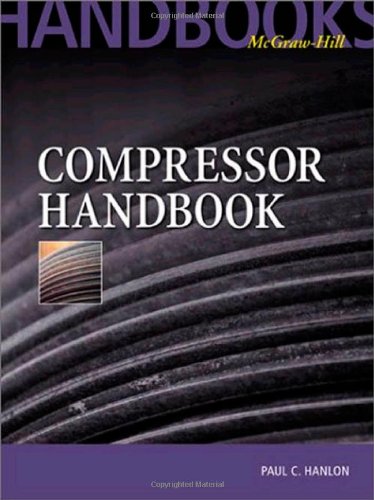
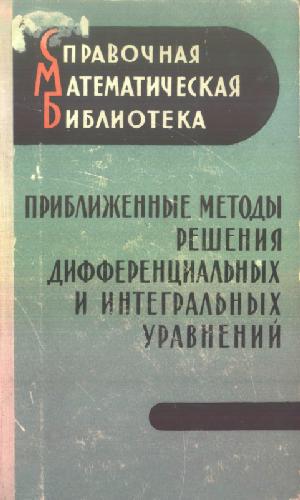

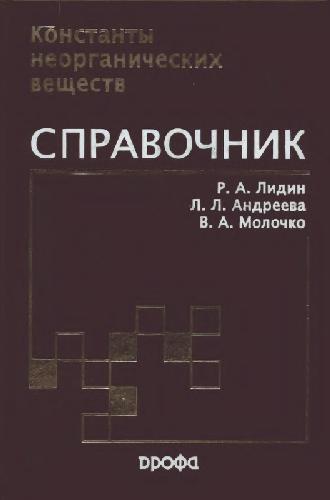
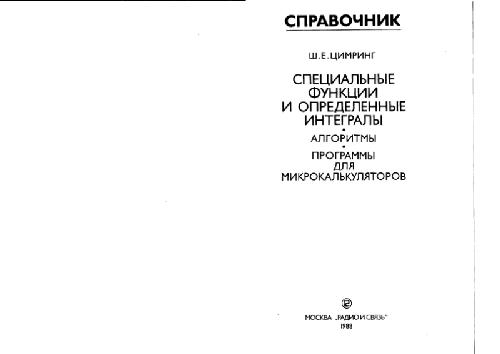
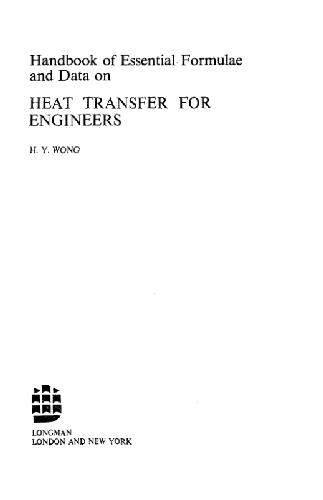
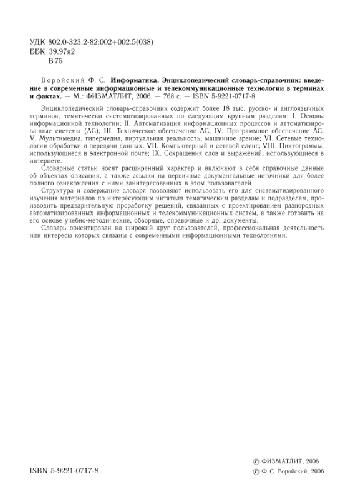
Reviews
There are no reviews yet.